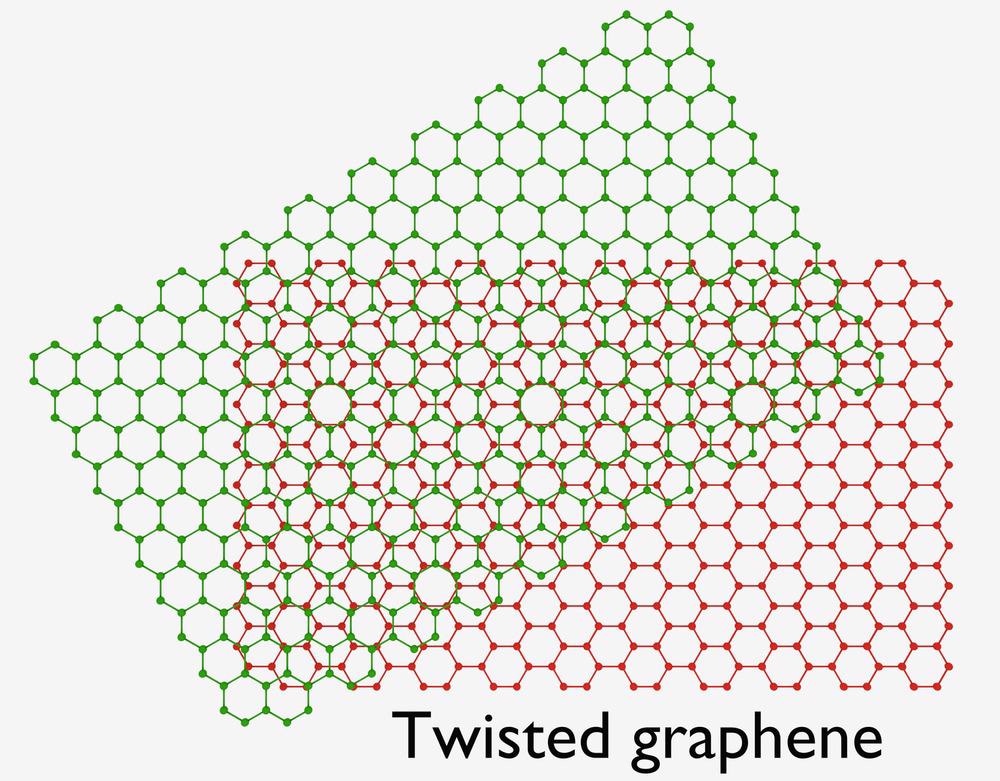In 2018, MIT researchers discovered that they could induce superconductivity in graphene by stacking two layers of the atom-thick material at a precise 1.1 ° angle. They called the material that they produced “magic-angle twisted graphene,” so named for the seemingly magical effects of this exact way for stacking graphene thin films.

Image Credit: MZinchenko/Shutterstock.com
Since first described four years ago, twisted graphene has rocked the world of advanced materials science and inspired researchers to look for more 2D materials that might develop remarkable properties if researchers can find their “magic angles.”
Two layers of graphene stacked at angles close to the magic 1.1 ° transform from a weakly correlated Fermi liquid into a strongly correlated 2D electron system. The resulting bilayer material exhibits properties that are extremely sensitive to carrier density and environmental factors like how close it is to nearby gates.
As well as superconductivity, magic-angle twisted graphene features insulating states that are induced by interactions, ferromagnetism, electronic nematicity, linear-in-temperature low-temperature resistivity, and quantized anomalous Hall states.
Stacking 2D Materials
Graphene is one of several 2D materials (or thin-film materials) that have gained significant attention in the last few decades due to its remarkable characteristics. These materials have proved attractive. This is largely due to the numerous ways they can be stacked and combined to make heterostructures, which are structures created from junctions between superconductors or heterojunctions, with novel properties.
One of the main ways of achieving novel properties in stacks of 2D materials is by tweaking the angle at which they are stacked on top of each other (think of the way napkins are fanned out at a cocktail bar.)
Twisting this the top layer so that it is overlaid and slightly offset to the bottom layer can create a type of inference pattern known as a moiré pattern- named after a textile that gets a rippled look from how it is woven together.
Moiré patterns have a spatial structure that features quasiperiodicity: it covers more area than either of the individual layers it is made from.
MIT researchers Pablo Jarillo-Herrero and Yuan Cao were experimenting with twisted 2D bilayers in 2018 when they discovered a so-called magic angle for bilayer graphene. When two layers of graphene are stacked at an angle of approximately 1.1 °, the resulting bilayer material is superconductive.
Not only this, but the researchers found that magic angle twisted bilayer graphene is highly similar to other materials that are superconductive at temperatures near or over 100 K.
Scientists agreed that this material provided an exciting platform for a new branch of research into unconventional superconductivity, which may lead to more insight into the still little understood phenomenon of superconductivity writ large.
Benefits of a Tunable Superconductivity
Twisted graphene has a much lower critical temperature (Tc) than other superconductive materials, only around 1 K.
In superconductive materials, the critical temperature is when they become superconductive. This is the same as aluminum, a conventional superconductor that has been known for some time and is described well by the Bardeen-Cooper-Schrieffer (BCS) theory.
An extremely low critical temperature usually makes a material unsuitable for industrial superconductivity needs, as excessive amounts of energy and water are needed to cool it down. But for research purposes, a low critical temperature is not necessarily a limiting factor.
Twisted graphene has around 10,000 times less charge-carrier density than aluminum. A low charge-carrier density means that the pairing mechanism that makes electrons join up and condense into a superfluid is more constrained: a limited number of available electrons to pair up.
This means that twisted graphene, which becomes superconductive at a low critical temperature despite a low charge-carrier density, is one of the most strongly correlated superconductors we know of.
Its electronic properties are more similar to superconductors with high critical temperatures, such as cuprates.
And because graphene’s carrier doping can be tuned easily by adjusting the voltage on the gate electrode, superconductive twisted graphene can be explored across all parts of the phase diagram with one device.
This presents a significant research advantage for the material, as superconductivity in cuprate superconductors exists in the electron-doped or holed CuO2 planes. Adjusting doping in cuprate usually requires an entirely new material with a different chemical composition to be fashioned from scratch.
The Secrets of ‘Magic’ Angle Graphene Are Now Fully Revealed
The Secrets of ‘Magic’ Angle Graphene Are Now Fully Revealed. Video Credit: Seeker/YouTube.com
Are There More Magic Angle Superlattices To Be Discovered?
Graphene is perhaps the most famous member of a growing family of 2D or ultra-thin materials whose nanoscale structural properties cause them to behave according to the laws of quantum mechanics.
Researchers have found 2D semiconductors, 2D ferromagnets, thin films that exhibit high spin-orbit coupling, and numerous other novel materials by slicing or growing matter in atom-thin layers.
Each could, theoretically, be produced in a strong-coupling regime by stacking two layers at a perfect or magic angle. An entirely new field of magic-angle superlattices may result from the discovery of twisted graphene.
Continue reading: How Can Twistronics Benefit Nanotechnology?
References and Further Reading
Andrei, E. Y. and A. H. MacDonald (2020). Graphene bilayers with a twist. Nature. Available at: https://doi.org/10.1038/s41563-020-00840-0.
Cao, Y., V. Fatemi, S. Fang, et al. (2018). Unconventional superconductivity in magic-angle graphene superlattices. Nature. Available at: https://doi.org/10.1038/nature26160.
Oh, M., K. P. Nuckolls, D. Wong, et al. (2021). Evidence for unconventional superconductivity in twisted bilayer graphene. Nature. https://doi.org/10.1038/s41586-021-04121-x.
Miller, J. L. (2018). Unconventional superconductivity discovered in graphene bilayers. Physics Today. Available at: https://doi.org/10.1063/PT.3.3913.
Princeton University (2021). Unmasking the magic of superconductivity in twisted graphene: Magic-angle graphene and high-temperature superconductivity linked. [Online] ScienceDaily.Available at: www.sciencedaily.com/releases/2021/10/211020135912.htm.
Disclaimer: The views expressed here are those of the author expressed in their private capacity and do not necessarily represent the views of AZoM.com Limited T/A AZoNetwork the owner and operator of this website. This disclaimer forms part of the Terms and conditions of use of this website.